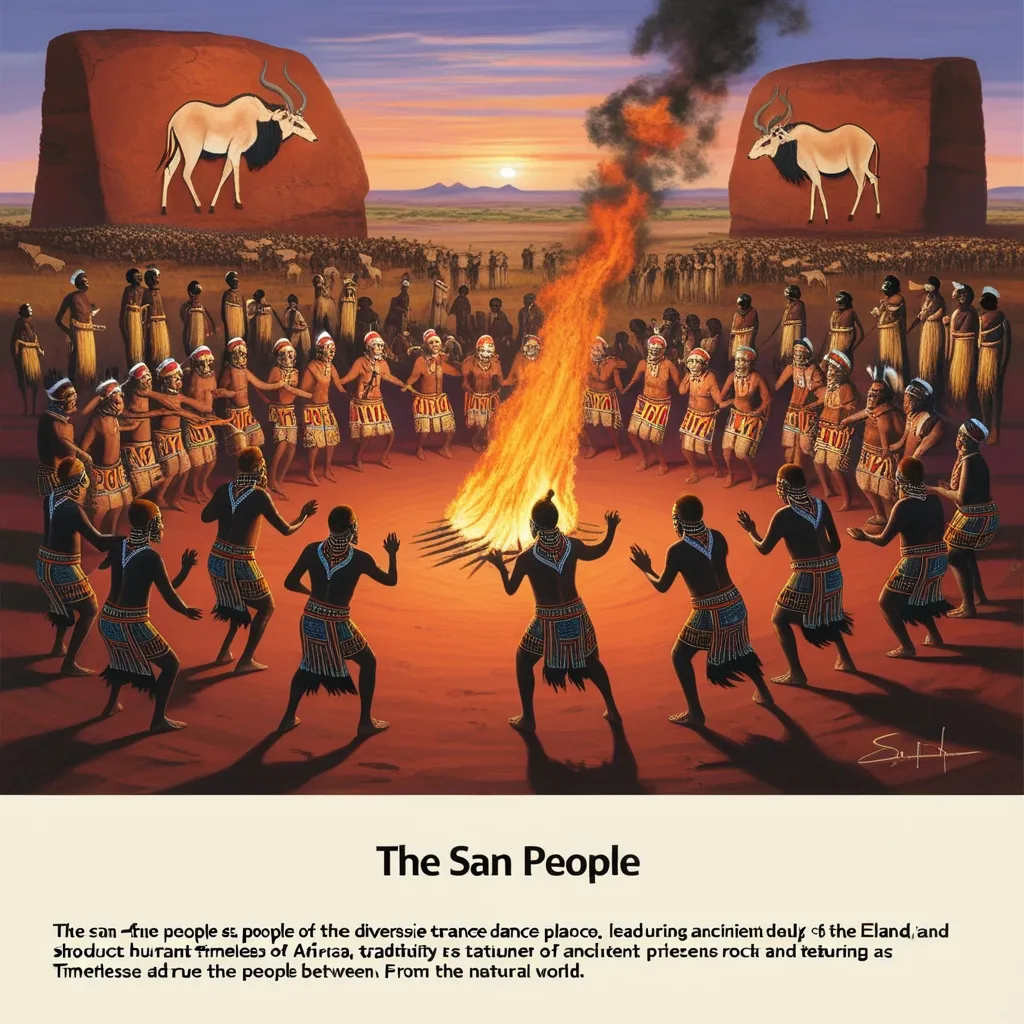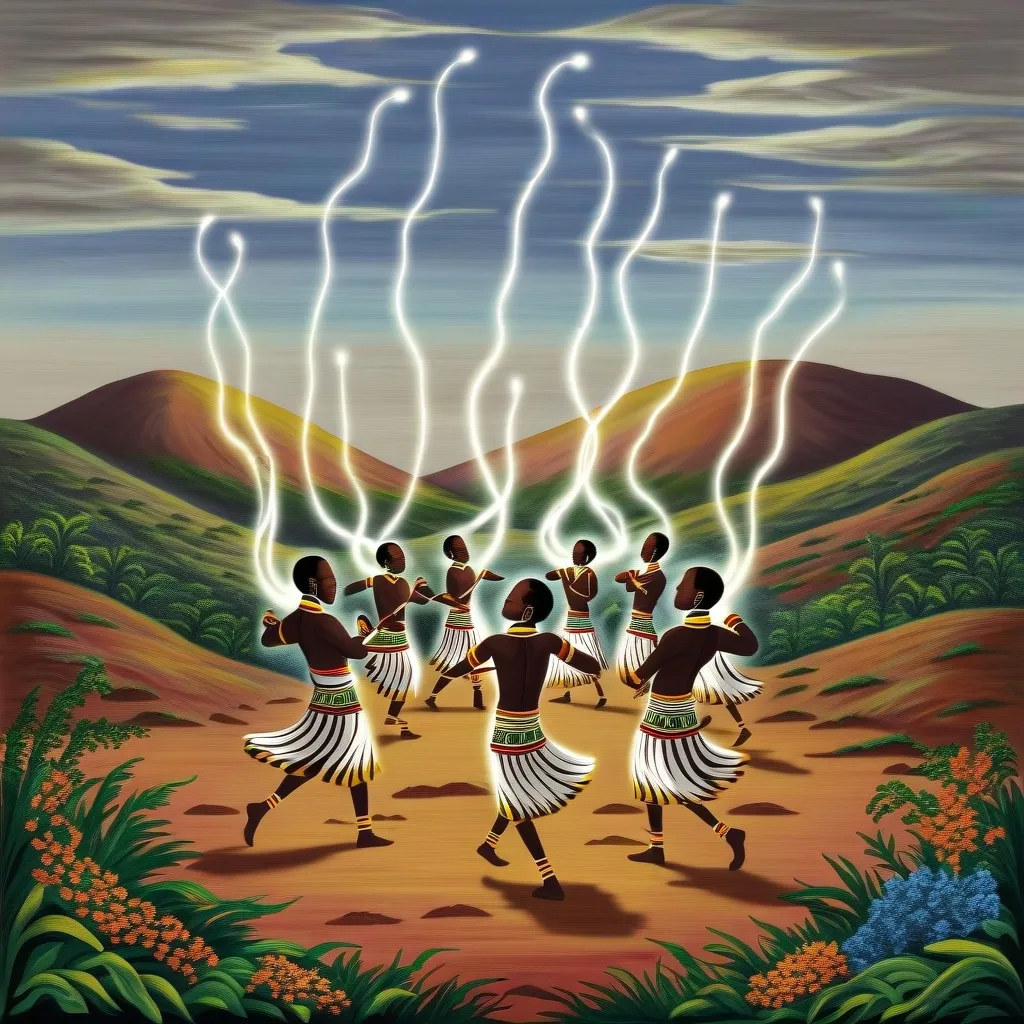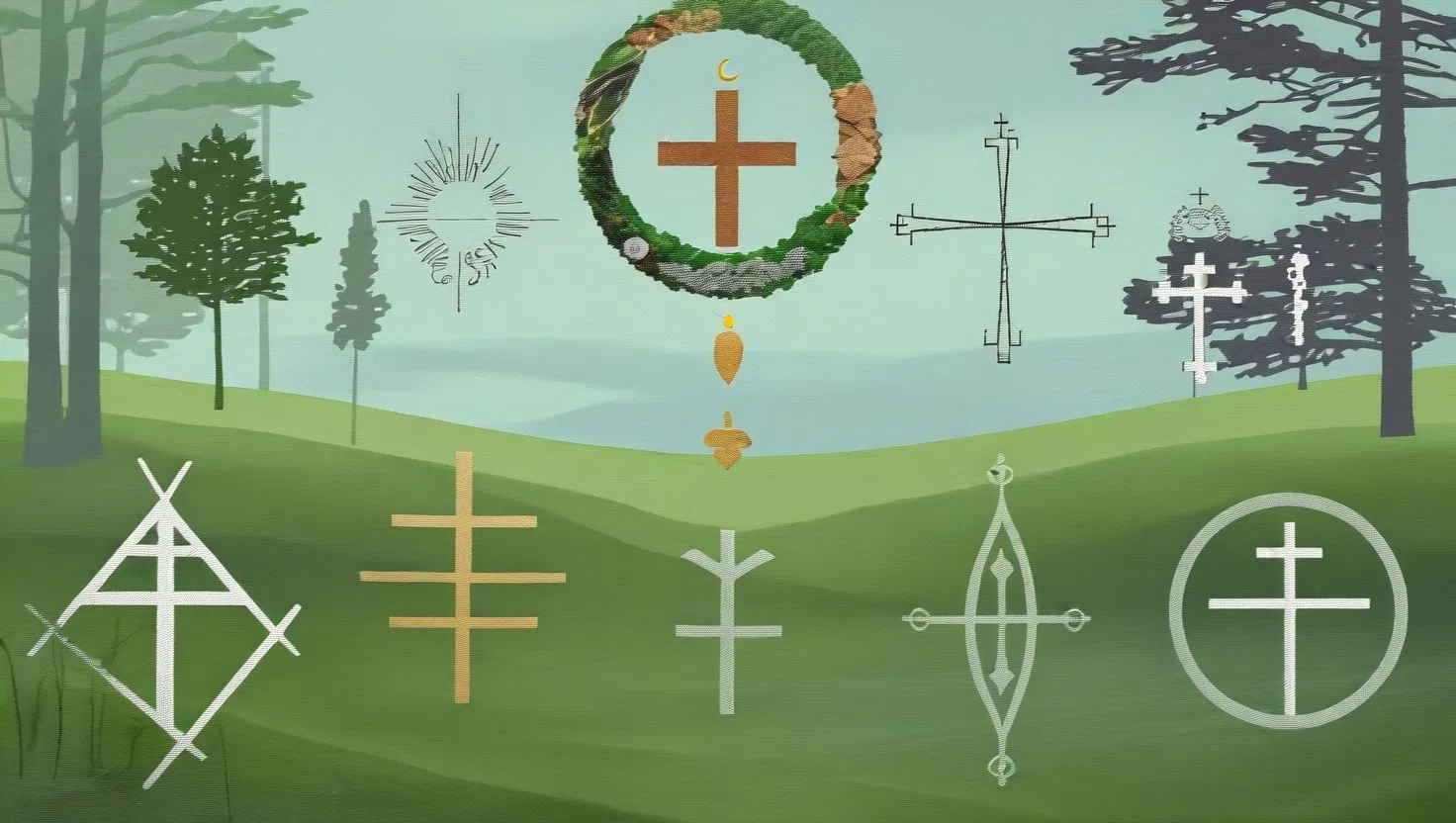Imagine a world where life thrums to the beat of drum circles, where stories unfold through dance, and where survival is intricately woven into the very fabric of nature. Picture a community where decisions are made through the collective voice, with no singular person wielding supreme power. This is the world of the San people, often known as the Bushmen, who reside primarily in the expansive terrains of Southern Africa. Their remarkable history, which stretches back tens of thousands of years, offers a glimpse into the soul of one of the most ancient cultures on Earth.
At the core of the San culture is a spiritual practice called the trance dance. This isn’t your typical dance-off at a local club but a deep, rhythmic journey into altered states of consciousness. The trance dance is led by seasoned shamans who guide participants through a medley of dancing, chanting, and drumming. It’s an immersive ritual, designed not just for entertainment but as a conduit for healing and spiritual connection. Around a blazing fire, dancers build a crescendo of energy, moving in sync until they transcend into a state that allows them to connect with the spirit world. Participants often experience physical symptoms like nosebleeds and contorted postures, signs intensely documented in their rock art.
This dance isn’t just for kicks; it holds significant healing properties, touching the physical, mental, and spiritual realms. It’s also a bridge to converse with ancestors, to seek their guidance, and harness their energies for personal and communal well-being. For the San, this connection is quintessential, as it ensures harmony and restores vitality to their lives.
Another marvel of San heritage is their rock art, which provides a visual diary of their spiritual endeavors. Found in caves and rock faces across Southern Africa, these paintings are created using a mix of natural materials like eland blood, fat, and stones. Frequently featuring the Eland, a revered animal in San cosmology, the art shows scenes from trance dances and community life, echoing deep-rooted spiritual narratives. These artworks are far from ornamental; they bear religious and spiritual heft, telling tales of hunts, dances, and historical encounters with earlier European settlers through vivid shades of red ochre, brown, black, and white.
Shamans, the spiritual epicenters in San communities, are the keepers of this mystical knowledge. These medicine men guide trance rituals and are mostly responsible for the revered rock art that serves as a window to the metaphysical world. Their roles go beyond mere performance, extending to rites that mark crucial life milestones. For instance, a young girl’s first menstruation sees the tribe dancing in sync with the mating rituals of the Eland, a dance supposed to endow the girl with beauty, serenity, and prosperity.
The San thrive within an egalitarian setup, where communal harmony takes precedence over hierarchical control. There’s no single ruler dictating life. Instead, decisions arise from group discussions where everyone’s opinion carries weight. While leaders can emerge based on expertise in hunting or deep medicinal knowledge, they don’t hold dominion over the group. This shared responsibility extends to gender roles as well, where both men and women may partake in tasks outside of traditional boundaries, like men gathering food or women joining hunts. Such role fluidity maintains community equilibrium and positions everyone on equal footing.
Food sustenance in San society comes from both the bounties of the land and the cunning of the hunt. Women gather a significant portion of the diet, including wild berries, roots, and nuts, accounting for nearly 75% of the community’s food intake. Men typically handle the hunting yet show meticulous care to ensure every part of their catch is utilized, distributing meat across the tribe in a ritual of sharing and sustenance.
A complex belief system governs the spiritual lives of the San, often varying between groups. Central to their mythology is a trickster-deity, /Kaggen, with a penchant for animal disguise and creation-themed exploits. There’s a belief in a Supreme Being, akin to the Creator, yet it doesn’t manifest in practices conventionally recognized as religion. Instead, their faith revolves around shared values like generosity, calmness, and humor. Practices such as prayer or praise are absent; instead, they lead lives of gratitude and harmony with the natural cosmos.
Respect for the natural world underscores the San way of life, a seamless dance of conservation and coexistence. Everything is connected, and no single entity takes precedence over another in nature’s great web. This philosophy of unyielding respect means they judiciously use their resources, eschewing waste. Population movements, as well as controlled appetites, are pivotal to their enduring sustainability.
Yet, modern times aren’t particularly kind to the San. Facing the onslaught of outside pressures, their way of life is often dismissed as primitive. They grapple with the erosion of land rights and are pushed toward more ‘civilized’ ways of living. Now, many find themselves beset by poverty, battling issues like alcoholism and land deprivation. However, glimmers of hope permeate the horizon through initiatives in community-based tourism and education, aiming to preserve the core of San culture and life.
There’s an abundance of wisdom to be gleaned from the San people. In a world struck by competitive streaks and complex societal pressures, their egalitarian ethos, spiritual simplicity, and relentless connection with nature offer invaluable lessons. Their way of life underscores a holistic approach to existence, highlighting sustainability, social cohesion, and a spirit enveloped in humility and generosity.
The San legacy stands as a testament to the profound, albeit ancient, connection between humans and the natural environment. Through the echo of their trance dances, the vivid hues of their rock art, and the quiet balance of their egalitarian community, they impart indispensable insights. As we navigate the labyrinth of modern life, we can find guidance and inspiration in the ancient wisdom that has been the San’s enduring backbone for thousands of years.






